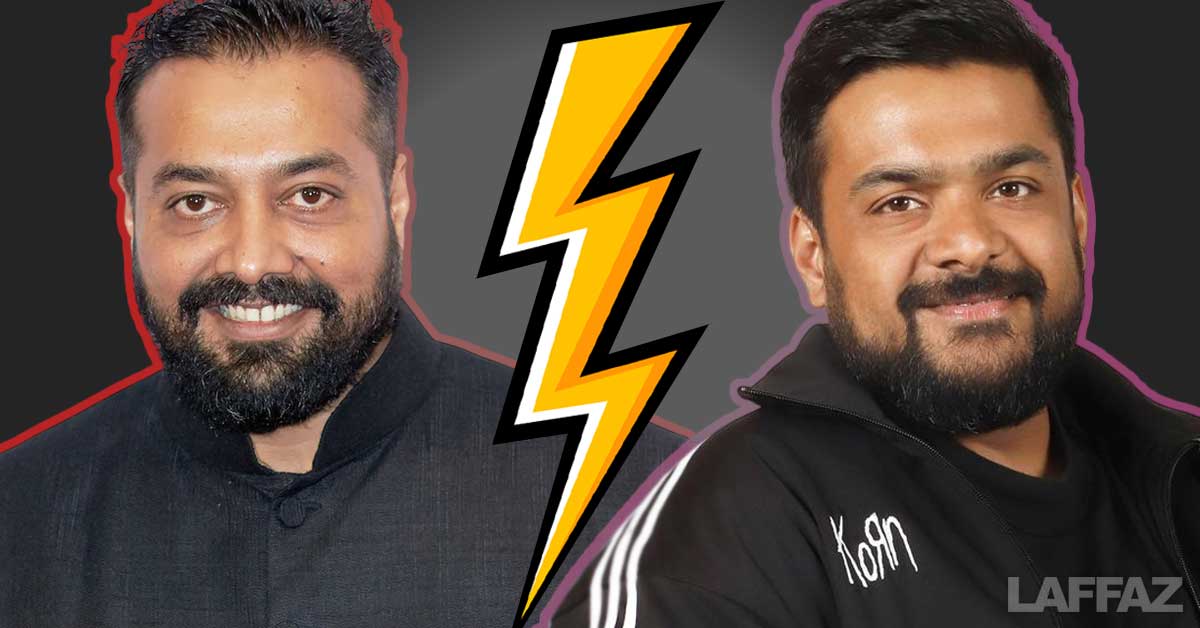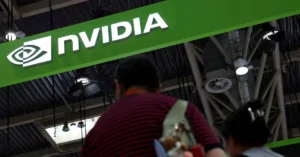Indian cinema has found itself at the crossroads of technology and creativity after filmmaker Anurag Kashyap slammed the producer Vijay Subramaniam for creating ‘Chiranjeevi Hanuman – The Eternal’, a film created almost entirely using artificial intelligence (AI). While the project is being touted as India’s first ‘Made-in-AI’ theatrical release, it has sparked heated debates among filmmakers, actors, and audiences about the future of storytelling and the value of human artistry in cinema.
Anurag Kashyap’s Strong Words
The ace filmmaker Kashyap, known for iconic films like Gangs of Wasseypur (2012) film series and Ugly (2013), took to Instagram to criticize Subramaniam, who is also the founder and Group CEO of talent management agency Collective Artists Network. Sharing the film’s poster, the 52-year-old filmmaker launched a scathing attack.
“Any actor or anyone who calls themselves artists and has a spine will be and should be either questioning him or leaving the agency since he has proved that he thinks you’re no match for his AI performance. This right here is the future for the spineless and cowardly so called artists in the Hindi Film industry. Well done Vijay Subramaniam. Shame is not enough on you. You should be in the gutter,” Kashyap wrote.
JOIN US TO STAY UPDATED ON YOUR FAVORITE MESSENGER APP!
He further added that agencies, which are supposed to represent artists, are instead prioritizing profits.

“So much for looking after and representing the interests of creators. End of the day, all these agencies are only interested in making money off you and since they choose turkeys after turkeys for you and you’re not making enough for them, they are going all AI,” he said.
In a follow-up comment, Kashyap clarified that he wasn’t against AI as a technology but was disappointed that it was being championed by a representative of artists:
“My genuine grouse is with my friend Vijay Subramaniam, because he is the CEO of KWAN Collective. He represents the artists, the voice of artists and he is producing an AI FILM, when the industry needs corrections, especially from the agencies, who are very responsible for costs going up, actors career paths and writers, musician, filmmakers.”
Vikramaditya Motwane and Ranveer Singh Join the Debate
Kashyap’s close friend and fellow filmmaker Vikramaditya Motwane also reacted to the film’s announcement, sharing a sharp critique on Instagram Stories:
“And so it begins… Who TF needs writers and directors when it’s ‘Made in AI’?” he wrote.
But not everyone in Bollywood is critical. Actor Ranveer Singh openly supported the project, backing Subramaniam and Abundantia Entertainment in the announcement post.
The caption of the post read: “Proud and honoured to bring the timeless story of Chiranjeevi Hanuman – The Eternal, to theatres, in a first-of-its-kind, ‘Made-In-AI’, ‘Made-In-India’ avatar. With deep reverence for our culture, heritage and history, we are set to release this innovative spectacle in theatres on Hanuman Jayanti 2026.”
Ranveer’s endorsement drew mixed reactions from fans, with many questioning why a leading actor would support technology that could eventually replace artists. One comment read, “It’s AI. One day, they’ll make a movie without you using AI. Why are you supporting this lack of creativity?” Another added, “As an actor with a huge reach, the least you can do is boycott the use of AI in creative industries and promote actual screenwriters.”
AI in Global Cinema: Lessons from Hollywood
India is not the first country to experiment with AI in cinema. In Hollywood, debates around AI reached a peak during the 2023 Writers Guild of America (WGA) and SAG-AFTRA strikes, where one of the central demands was restricting studios from replacing writers and actors with AI-generated performances.
Studios like Disney and Marvel have already tested AI tools—Marvel used AI-generated visuals in the title sequence of Secret Invasion (2023), which sparked backlash from artists who accused the studio of undermining human creativity. Netflix, too, has dabbled with AI-assisted storyboarding and dubbing.
While Hollywood unions pushed back strongly against AI, India has entered the debate differently—with producers presenting AI-generated films as “innovation” rather than as a threat. The contrasting approaches highlight how the global creative community is grappling with the same question: Will AI be a tool that supports artists, or a replacement that sidelines them?
Economics of AI Filmmaking in India
Supporters of AI cinema argue that the technology can reduce costs, accelerate production, and make films more accessible for audiences with shorter attention spans. Vijay Subramaniam told PTI that his goal was to merge “modern technology with ancient stories” to appeal to young audiences.
From a business perspective, the economics are tempting. India’s media and entertainment industry was valued at ₹191 billion in 2024 (FICCI-EY Report), and producers are under pressure to deliver high-budget spectacles at lower costs. AI could theoretically eliminate expensive star salaries, reduce post-production timelines, and bypass traditional bottlenecks in filmmaking.
But the same economics threaten to destabilize thousands of jobs. From screenwriters to junior artists, sound designers, musicians, and VFX professionals, the creative labour force could face displacement if studios increasingly prefer AI-driven solutions. Critics argue that the long-term social costs may outweigh the short-term financial benefits.
Editor’s Note: What AI Means for Creative Labour
AI-generated films represent both a challenge and an opportunity for Indian cinema. On one hand, technology can democratize filmmaking by reducing costs, allowing smaller creators to compete with big studios. On the other, it risks devaluing human effort at a time when the industry is already struggling with job security, fair pay, and representation.
The controversy around Chiranjeevi Hanuman film should be seen less as a clash between “old-school” and “new-school” filmmaking, and more as a wake-up call for Indian cinema to rethink how it balances technology with humanity. If agencies and producers view AI as a replacement rather than a collaborator, the industry risks alienating its most valuable resource, its artists.
Future Scenarios: Where Does Indian Cinema Go from Here?
The heated reactions to Chiranjeevi Hanuman underline that AI in cinema is not going away—it will only grow. But how it grows depends on choices made today.
- Scenario A: AI as a niche experiment. AI films remain limited to mythological epics, experimental genres, or marketing stunts. Human-led cinema continues to dominate.
- Scenario B: AI floods the mainstream. Producers fully embrace AI to cut costs, leading to mass job losses, fewer creative opportunities, and increasingly homogenized storytelling.
- Scenario C: A balanced model. AI becomes a tool that supports rather than replaces artists—used for pre-visualization, VFX, or language dubbing, while humans remain central to storytelling.
For now, Chiranjeevi Hanuman – The Eternal stands as a test case. Its reception, whether celebrated or rejected, may well determine how aggressively AI enters the Indian film industry in the coming decade.
Key Takeaways
- Anurag Kashyap and Vikramaditya Motwane have strongly criticized AI-generated films, calling them a betrayal of artists.
- Ranveer Singh has supported producer Vijay Subramaniam, sparking backlash from fans.
- AI offers cost savings but threatens to disrupt India’s creative labour ecosystem.
- Global examples, especially from Hollywood, show both the potential and dangers of AI in cinema.
- The future of Indian cinema depends on whether AI is embraced as a collaborator or wielded as a replacement.
ⓘ As part of our ongoing support for startups and SMEs, LAFFAZ Media publishes feature and resource articles that may include references and links to external websites. These inclusions are selected at our editorial discretion to provide valuable information to our readers. LAFFAZ Media does not control, endorse, or assume responsibility for the content or practices of external websites. For more details, please refer to our Terms and Conditions.





